Even though many of the mums sold in the fall are hardy varieties, there are some things to consider. If you would like mums as perennial plants in your landscape beds, plant them as early as you can. The plants need to establish a strong root system before the winter, therefore plant them in the late summer as soon as you see them at garden centers. Use the same soil amendments and fertilizers that you would use for your other perennials. Mums are often used as fall color in containers and then planted once the flowers are spent in the late fall.
Usually this is too late for a root system to establish before winter freezing. Planting chrysanthemum in the spring gives the perennial plant time to establish and adapt to its new garden home. You'll easily find mums in garden centers and nurseries in both fall and spring, but planning ahead is key to successful planting. Planting in the spring will also result in a bigger bloom the following season.
Although some fall mums can survive winter if planted immediately, the odds are much better with spring-planted mums. These fall landscaping flowers are sometimes planted as annuals but can be kept as a perennial plant with proper care. Most garden mum plants are perennials through USDA plant hardiness zones 5-9. To prepare mums for winter, add a thick layer of 3 inches of mulch surrounding the root zone.
Gorgeous mums in shades of red, yellow, orange, purple, and white pop up everywhere in the fall. I like to use them for autumn displays on my porch, along with dried cornstalks, gourds, and pumpkins. But by the following spring, my plants are usually reduced to clumps of dead stems. After checking in with a few mum-growing pros, I realized I was planting my mums too late.
In fact, garden mums are fairly easy to grow, once you know the following common mistakes to avoid. Plant mums as soon as the soil warms in the spring. From late spring to mid-summer, pinch back the tips and flower buds on all shoots to make the plant bushier and prepare it for a dramatic fall show. For optimal blooming, the plants should be fertilized regularly throughout the growing season. After the blooms fade, cut the plants down to about 6 inches, and cover them with straw or another dry mulch to protect the roots over winter.
Established plants should be lifted and divided every two to three years. Garden mums are readily available in a wide range of colors for purchase now and a great way to add late season color to your garden. You may also see the terms "hardy mums," "fall mums" and "chrysanthemums" used for these plants at garden centers. Amy Enfield, a horticulturist for Miracle-Gro, says garden mums should be planted outdoors by late summer or early fall, so the roots have time to form before the soil freezes.
Also known as hardy or Belgian mums, garden mums are sold in garden centers and nurseries, and they're perennials in USDA Zones 5 to 9. But even when they're planted at the right time, they need a few other things, like excellent drainage. Enfield adds, "There's no guarantee they will survive the winter, particularly the further north you live in the U.S." In general, the densely flowering mums that are offered for sale in full bloom in the fall should not be counted on to overwinter. You should find true winter hardy mums offered at garden centers alongside other hardy perennials, available throughout the planting season.
Ideally, these should be planted in spring or summer to allow the roots a chance to establish before winter. Though we have carried traditional perennial mums in the past alongside our garden mums, we are happy to offer a new perennial mum series; Igloo Mums . They produce nearly spherical plants from a single cutting, with no pinching, and grow 18 to 24 inches tall and 30 inches wide. But if you plan to keep your mums as a perennial, plant seeds in the early spring or in the fall at least six weeks before your area's first hard freeze. Hardy mums are fast-growing and will reach their full height within their first year, with the plant filling out a little more each subsequent year. When I first began to grow hardy mums, I was delighted to discover that this genus offers tall selections , which can be used to round out a planting and add variety.
I can think of no better one to start with than Chrysanthemum 'Emperor of China' (Z 4–9). Reaching a height of 3 to 4 feet, this selection has dark pink buds that form beautiful double flowers, which are pink with dark centers. The 1½-inch-wide blooms with quilled petals open quite late, usually not until the third week of October, but they last until Thanksgiving if there is no killing frost. 'Emperor of China' can appear lanky, so I recommend placing it in the middle or back of the border or pinching it in late spring. Mums aren't exactly "pruned," but are instead pinched throughout the growing season.
This helps the plant branch out, become fuller and offer more blooms. When your plant reaches 6 inches tall in the spring, simply pinch off 1 inch of each shoot. Repeat this every 2 to 3 weeks until early summer.Deadhead spent blooms throughout the fall for an extended bloom time. Once the plant has died in the winter, resist cutting it back. Research reveals that allowing it to die back naturally over the winter produces a stronger plant.
Simply clean up the dead stems and foliage in the spring. Finally, keep in mind that the fall mums sold in garden centers nowadays aren't the same kinds of plants sold 20 years ago, Enfield says. Although garden mums are considered hardy to Zone 5, breeders have developed fall mums with big mounds of showy flowers. This has resulted, she says, in plants that may not be as cold hardy as in the past. So, if your fall-planted mums don't come back like true perennials, just treat them like annuals.
Replace them with beautiful, fresh plants when you're ready to do your fall decorating and enjoy their colorful blooms for a season. Fertilizing your mums gives them an added boost of essential nutrients for the best growth. The primary growth of chrysanthemum plant varieties takes place in spring and early summer. If you plant fall mums, wait to begin their fertilization until the spring. Fall fertilization can actually reduce the hardiness of chrysanthemums to survive cold winters. Garden mums (Chrysanthemum spp.) are herbaceous perennials in the daisy family and are stalwarts of the flowering autumn garden.
When garden centers sell blooming potted mums in the fall, they are usually used as annuals and discarded when the blooms fade. And when gardeners try to transplant these mums into the ground late in the season, chances are they won't make it through winter and become perennial. If you live in a cold climate, it is best to leave the foliage on the plant, even after it has browned and died, to increase the plant's chance of surviving the winter. In spring, you can prune out the dead leaves before the new ones start to develop. Plants should be inches apart to allow for good circulation and to cut down the chances of powdery mildew.
When the plants come up in the spring, let them grow to about 4 inches tall and then pinch the top off each shoot, leaving about 3 to 4 leaves on the stalk. Do this about every other week or so until the July 4. When you stop pinching them, they will set flower buds on well-formed, compact plants.
You can keep the plants attractive by deadheading spent flowers. Do not cut the plants to the ground at the end of the season. I know it looks ugly, but the crown of the plant is protected by its dead stalks. Add some mulch around the plants and wait until spring to remove the old plant material. However, there are varieties that are truly perennial in most climates when planted in the early spring or in the fall several weeks before the first frost. These plants grow fast, and you should have flowers in the first growing season.
Bloom times vary with variety and climate from early September through mid-October. Most gardeners plant mums too late in the fall for the plants to survive over winter. Some of the mums may come back the next year if they are mulched. The shallow-rooted mums that are planted late in fall while in full bud or flower just do not have enough time to establish before winter sets in. It seems as soon as the air cools, signaling the coming of fall, garden centers begin showcasing full mounds of brilliant red, yellow, and violet flowers.
Chrysanthemums, or mums, are a staple in fall gardens. Mums are a national symbol of fall abundance, and this herbaceous and hardy perennial is an easy addition to give a gorgeous pop of color in your fall garden landscape. With a little understanding and a few simple tips, you can have a lush, beautiful fall chrysanthemum garden display to help celebrate the changing of seasons. After much trial and error, I now have lots of 8-year-old hardy mums in bloom. First of all, you need to understand that mums are short day plants, which means that they need longer periods of night and cooler temperatures to bloom.
Nature provides that for us in the fall, but the plants must be mature. In the greenhouse, growers start the plants in the spring, and later "fool" them into blooming by shading them with a dense black cloth and controlling the temperature. You would do much better if you purchased the hardy mums in the spring and introduced them into your garden so that they will have a longer, natural growing period. Mums planted in the fall do not have enough time to establish a strong root system in northern Illinois. If you want to avoid this hamster wheel of fall color hassle, consider planting perennial mums – winter hardy chrysanthemums – in the landscape beds instead.
Johnson's Nursery carries 5 of the Mammoth® Series , introduced by the University of Minnesota. Like most plants coming out of Minnesota, they are very cold tolerant and have a much better chance of surviving winter than their less expensive counterparts. Even better, they have been bred so you don't have to pinch them back during the summer for a bushy appearance. Nestle a pumpkin next to your perennial mums for the perfect harvest time landscape.
While many of these Mum varieties are indeed hardy, they are unlikely to overwinter in our northern gardens. This is because they are entering the winter in a weakened state. Growers pamper them in greenhouses throughout the season.
In fall, when the plants are supposed to divert energy into root development to survive the upcoming winter, growers pump them with fertilizer to produce a profusion of flowers. As their common name suggests, hardy mums are hardy both to cold and heat. They can handle temperatures up to 100 degrees Fahrenheit, though they'll need sufficient water and some shade in those conditions. Likewise, they can survive temperatures down to around 20 degrees Fahrenheit. In cold climates just outside of their growing zones, they sometimes can survive winter if the roots are protected with a layer of mulch or straw.
Leaving the degraded foliage in place over winter also can help to insulate the roots. A moderate humidity level is ideal for these plants. The chrysanthemum growing rate depends on many variables. Different varieties feature different growth rates and mature size. Plants grown from seed may take several years to reach their full growth potential.
Mums grown from already-established garden center plants and division have a head-start on the growing season. Taking proper care of mums through watering, fertilizing and pinching increases the fullness and growth capabilities of the plant. If you want fall flowers on your mums, you will need to trim the plants back periodically throughout the summer. Start when the plants are about 4 to 5 inches tall and repeat every 2 to 3 weeks until about mid-July. This will cause the plant to get stocky and bushier, and by late summer, it should be covered with flower buds.
In late summer when other plants call it quits, mums hit their stride. Like poinsettias, they're photoperiodic, meaning they rely on specific amounts of light to send the signal that it's time to start putting on a show. Garden mums are short-day plants and initiate flower buds in response to an interaction of day length, temperature and plant age.
On average, garden mums will not start to set buds until the nights last about 10 hours long. Perennial mums, on the other hand, should be planted directly into your garden bed in the spring. Though they sometimes have smaller flowers, they'll provide autumn color to your garden year after year. However, they do require more maintenance throughout the summer. Like annual mums, you'll get the best blooms if they're planted in full sun, but they will tolerate partial shade. This encourages them to grow fuller and bushier, and flower later into the season.
Once the weather turns cool and summer blooms begin to fade, however, we will begin to see Autumn's arrival as mums appear on shelves at garden centers and supermarkets. Late-blooming mums add a diverse array of bright colors and flower shapes and sizes to add natural decoration to the Fall season. I love seeing mums during this time of year, but I much prefer Perennial varieties over the Florist pot mums we tend to see on store shelves. Pinching hardy mums requires more maintenance than any other aspect of caring for them. But it's worth it because pinching yields compact, bushy plants with profuse blooms.
Start pinching in the spring when the new growth has reached roughly 6 inches long. Every two to three weeks, pinch back half of any new growth when it reaches 6 inches. Stop pinching chrysanthemums around the beginning of summer or else bud formation won't occur soon enough to ensure flowering for fall. The mums you see in the fall have been consistently cut back by the growers through the spring and summer. Doing this controls the size of the plant, creates a dense shape, and delays blooming until the fall.
On their own, mum tends to grow quite large and will bloom in the mid to late summer. They need to be cut back in mid-summer for fall blooms. Even a perennial, hardy chrysanthemum needs a little TLC to survive winter's harsh weather. Potted plants can be deadheaded and installed in well-worked soil with good drainage after they are finished blooming.
You may choose to cut back the stems to 2 inches (5 cm.) from the ground in late fall or leave them until early spring. Also, garden mums tend to have smaller flowers than the annual potted variety. Although most mums are purchased from garden centers as already-established plants or propagated from cuttings and division, you can grow chrysanthemums from seed.
It can be a bit of an adventure, because many chrysanthemum seeds do not stay true to the parent plant. This means you can end up with a wide variety of flower colors and sizes. Smaller, spring mums don't seem to fill out a garden space as well.
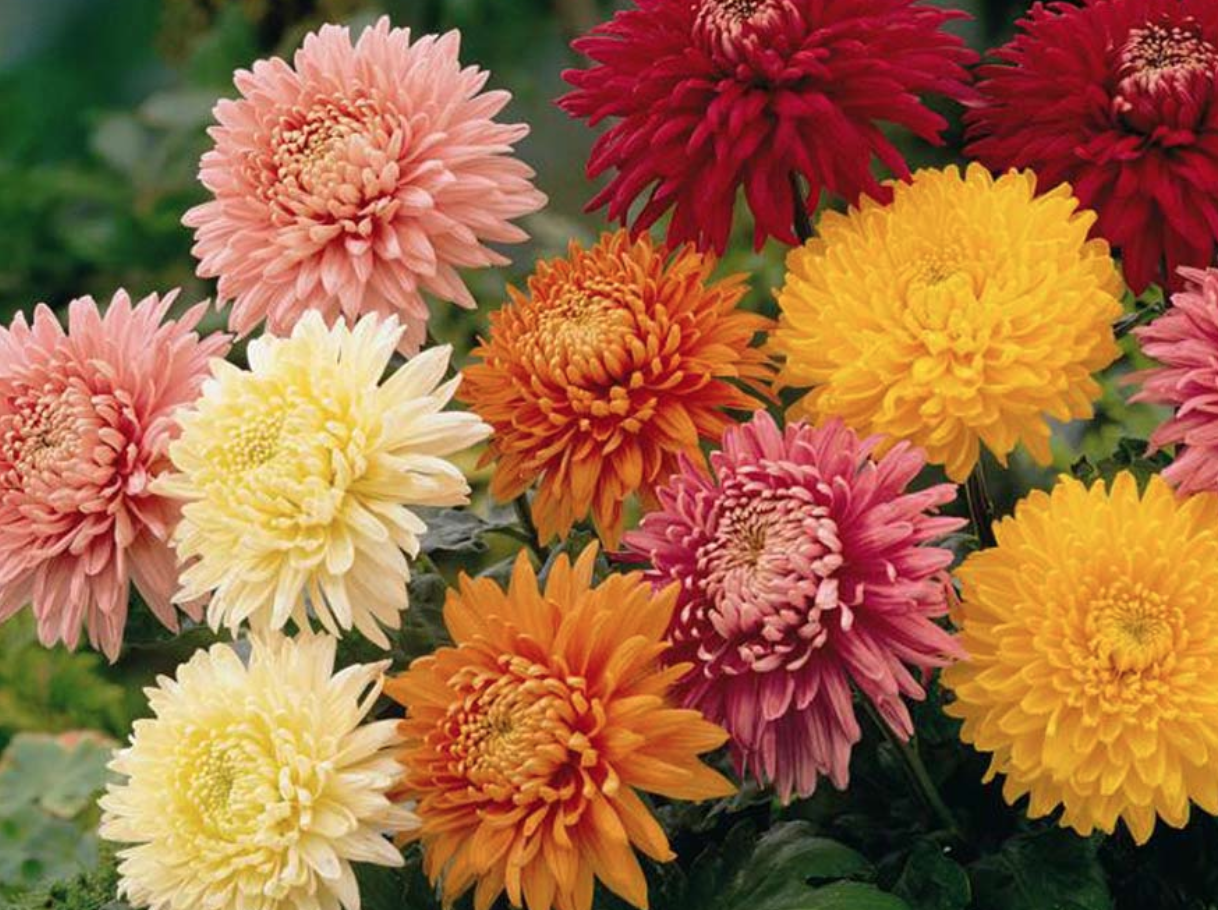




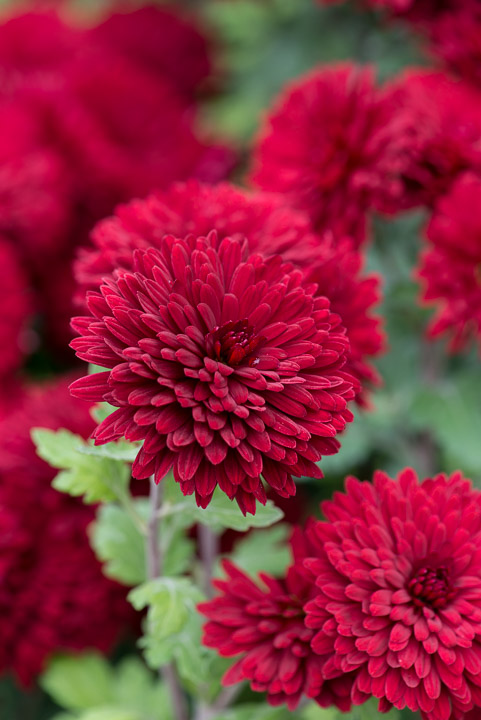






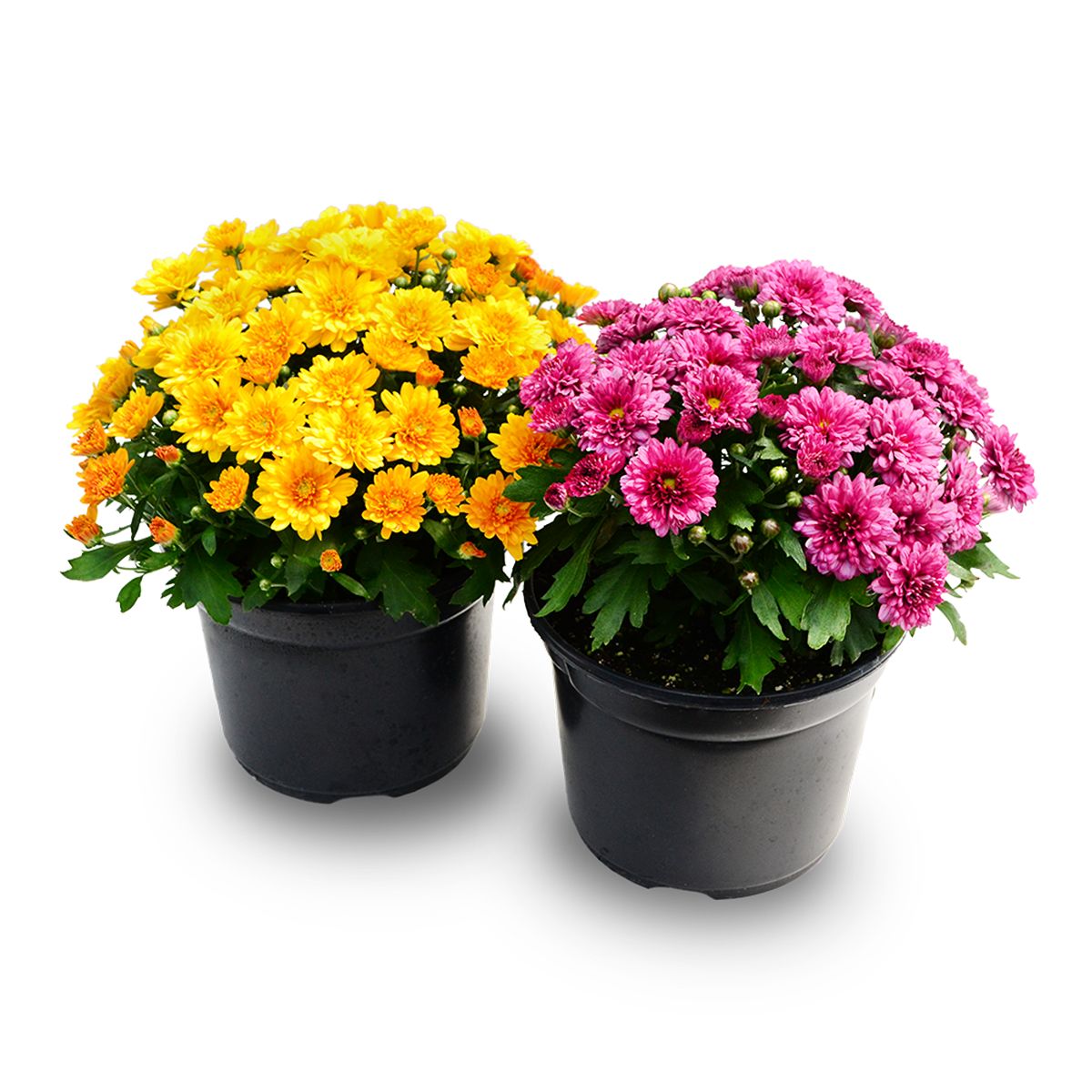

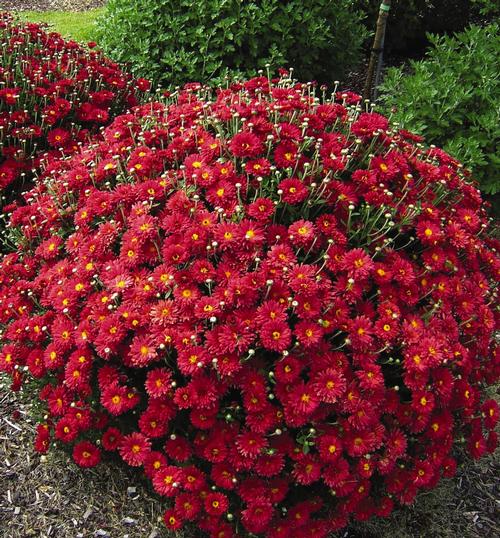
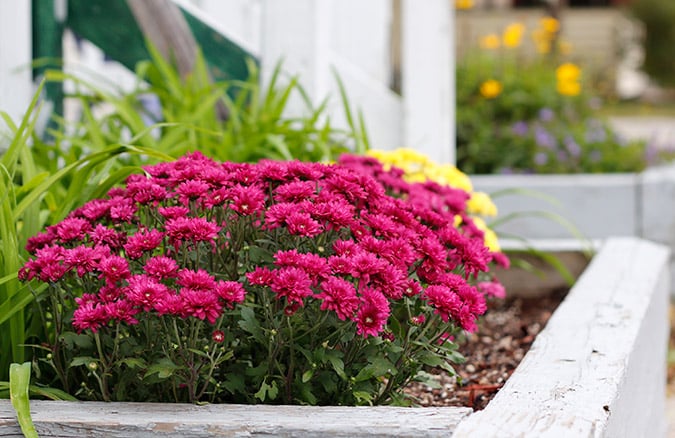

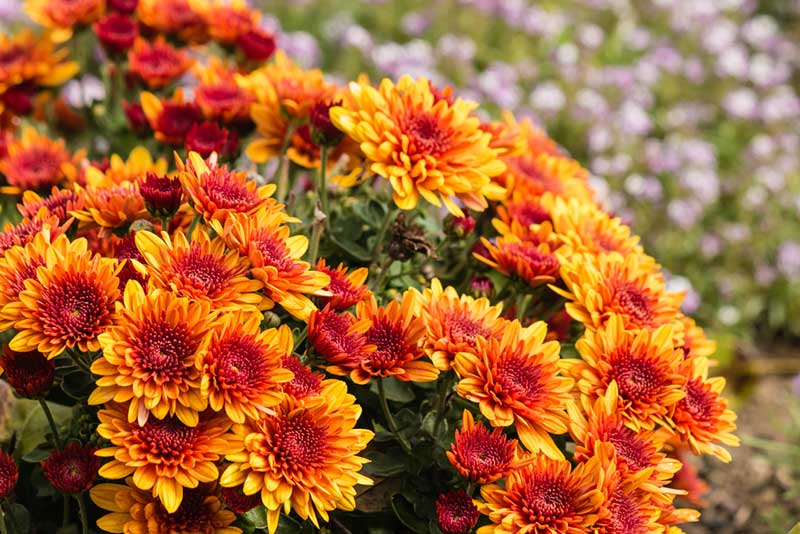






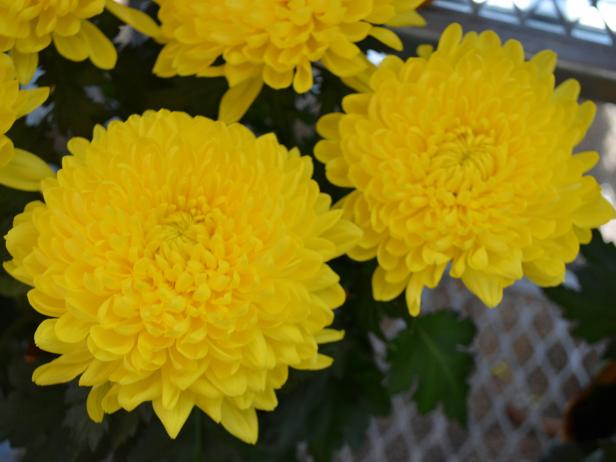


No comments:
Post a Comment
Note: Only a member of this blog may post a comment.